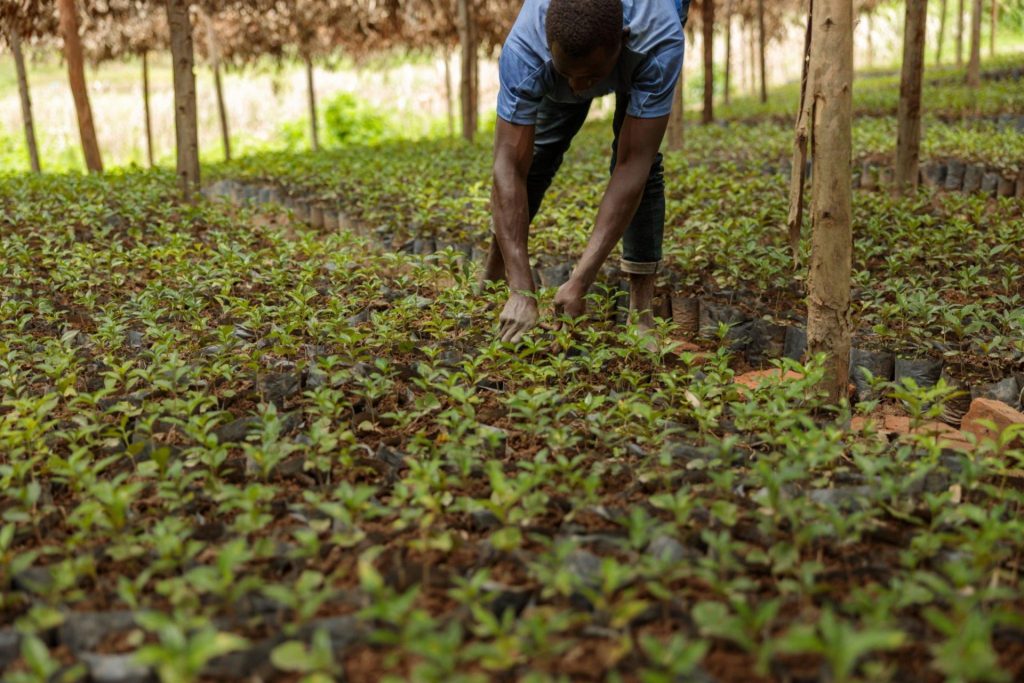Carbon sequestration is the process of capturing and storing CO2 from the atmosphere and mitigating climate change impacts. In recent years, Africa has made significant progress in implementing carbon sequestration initiatives, directly benefiting the continent and generating carbon credits or voluntary reductions for investors.
Africa has supported the planet through various carbon sequestration and carbon capture projects, demonstrating its commitment to emissions reduction. This blog outlines the current progress of carbon sequestration initiatives in Africa to amplify their impact on the nation’s carbon footprint.
Potential Benefits from Carbon Sequestration Projects in Africa
1. Reforestation Initiatives
Africa, with its rich biodiversity and vast landscapes, faces the challenges of deforestation and land degradation. Recognizing the urgency of addressing these issues, Africa has launched reforestation projects that play a crucial role in carbon sequestration.
The Great Green Wall Initiative
Among Africa’s notable reforestation efforts, the Great Green Wall initiative stands out. Launched in 2007, this project spans 20 countries across the Sahel region, from Senegal in the west to Djibouti in the east. It aims to combat desertification and land degradation by restoring 100 million hectares of land through tree planting and indigenous vegetation. This not only sequesters carbon but also provides job opportunities, promotes sustainable agriculture, and offsets carbon capture.
Reforestation in Madagascar
Madagascar, a global biodiversity hotspot, faces severe deforestation challenges. Conservation organizations and local communities are actively involved in reforestation efforts, such as the Alaotra-Mangoro REDD+ project. This project focuses on protecting and restoring Madagascar’s forests while promoting sustainable land management. It aims to reduce deforestation, conserve biodiversity, and sequester carbon in the process.
Community-Based Reforestation in Nigeria
In Nigeria, community-based reforestation projects have gained momentum. The Oluaka Institute’s “Adopt-a-Tree” initiative encourages local communities to plant and nurture trees, making notable contributions to carbon sequestration. This initiative also empowers communities, enhances livelihoods, and improves local ecosystems.
2. Reducing Emissions from Deforestation and Forest Degradation (REDD+)
REDD+ is a United Nations-backed framework that provides financial incentives to countries and communities for safeguarding and sustainably managing their forests. The “+” in REDD+ signifies its broader goals, including biodiversity conservation, enhanced forest carbon stocks, and sustainable forest management. In Africa, REDD+ programs have become pivotal in carbon sequestration efforts.
REDD+ in the Democratic Republic of Congo (DRC)
The DRC hosts a significant portion of Africa’s tropical rainforests, which store substantial carbon stocks and sustain diverse ecosystems. REDD+ initiatives in the DRC aim to combat deforestation and forest degradation while involving local communities. Furthermore, progress has been made in establishing safeguards and legal frameworks to protect indigenous rights and local communities in the process.
REDD+ in Ghana
Ghana, an early adopter of REDD+, has been dedicated to reducing emissions from deforestation while promoting sustainable land management. Ghana’s comprehensive strategy addresses deforestation drivers like illegal logging and land-use change. It also establishes economic incentives for communities to safeguard their forests through carbon capture and credit systems.
REDD+ in Tanzania
Tanzania actively participates in REDD+ programs and has developed a National REDD+ Strategy. These strategies include community-based forest management and policy and legal framework improvements.
3. Agroforestry and Sustainable Land Management
Agroforestry, a land-use system combining agriculture with tree and shrub cultivation also plays a vital role in climate change mitigation and carbon sequestration. These practices preserve ecosystems and facilitate carbon capture and storage in Africa.
The Sahel Farmer-Managed Natural Regeneration (FMNR)
Focused on the Sahel region, facing severe land degradation, FMNR encourages farmers to regenerate native trees and shrubs on their land. The outcomes are improved soil fertility, increased crop yields, and substantial carbon sequestration.
Cocoa Agroforestry in Côte d’Ivoire
Côte d’Ivoire, a major cocoa producer, promotes agroforestry by encouraging farmers to intercrop cocoa trees with shade trees such as mahogany and rubber. This practice preserves forests, enhances carbon storage, and improves cocoa production.
The TerrAfrica Initiative in Burkina Faso
Burkina Faso’s TerrAfrica program focuses on sustainable land management, implementing soil and water conservation measures. Through afforestation and reforestation, the project aims to restore degraded lands, enhance soil fertility, and sequester carbon.
4. Renewable Energy Development
The African continent harnesses renewable energy sources to combat climate change. Solar, wind, and hydro power play pivotal roles in reducing carbon emissions by replacing fossil fuels in electricity generation.
South Africa’s Renewable Energy Program
The Renewable Energy Independent Power Producer Procurement Program (REIPPPP) in South Africa attracts investments and drives the installation of solar and wind power projects. Integrating these sources into the grid reduces carbon emissions and dependence on coal.
Morocco’s Solar Ambitions
Morocco capitalizes on its abundant sunlight through massive concentrated solar power plants, including the Noor Ouarzazate complex. These plants provide sustainable energy and contribute to reducing Morocco’s carbon footprint, showcasing the potential of solar energy in Africa.
Kenya’s Geothermal Power
Kenya harnesses its geothermal energy potential, demonstrating the benefits of renewable energy. The Olkaria Geothermal Power Station provides a significant portion of Kenya’s electricity, reducing greenhouse gas emissions.
Microgrid and Off-Grid Solutions
In remote African areas, electricity access remains a challenge. Developing microgrids and off-grid renewable energy solutions not only brings power to these regions but also cuts carbon emissions.
Challenges Africa Encounter in Carbon Sequestration
- Funding: Sustainable funding remains a concern for the long-term success of REDD+ programs.
- Governance and Enforcement: Transparent governance, monitoring, and regulation enforcement are vital for program effectiveness.
- Investment: Adequate funding is needed for renewable energy infrastructure development. Supporting companies like Ecostack, which build climate solutions to reduce carbon emissions, allows your business to contribute to carbon sequestration and carbon capture initiatives.
Conclusion
Africa’s commitment to carbon sequestration initiatives is commendable in the fight against climate change. Despite existing challenges, the progress is both inspiring and essential for addressing carbon emissions. Collaboration with companies like Ecostack empowers African businesses to be part of the solution, contributing to carbon sequestration and a more sustainable future. Join us today to embark on your journey towards making a positive impact against carbon emissions.

